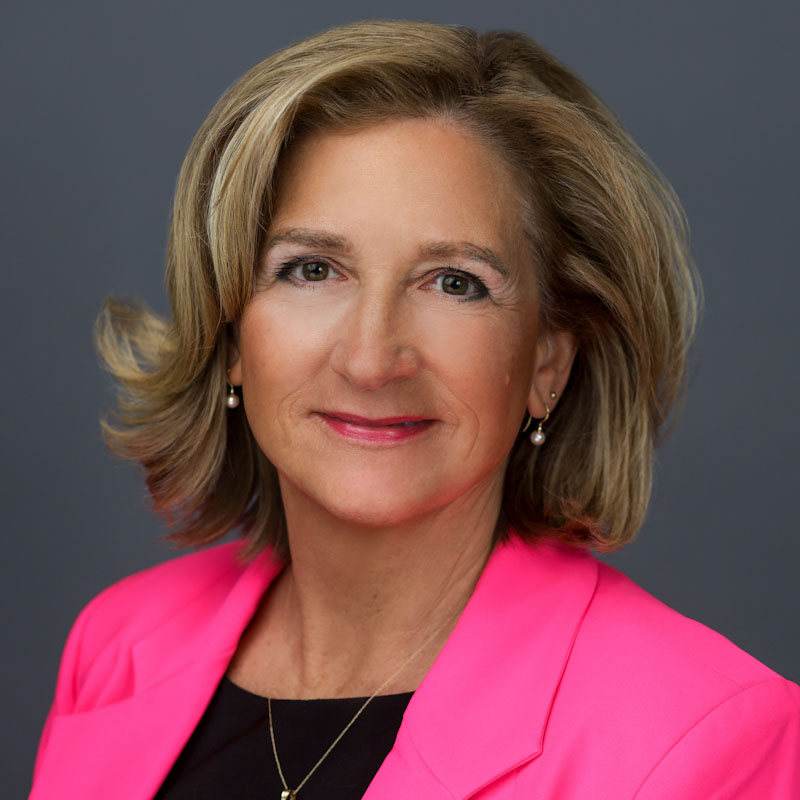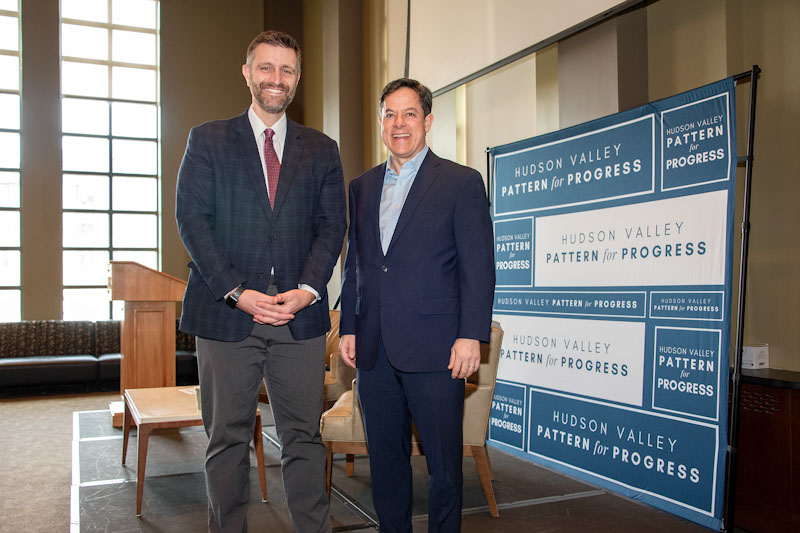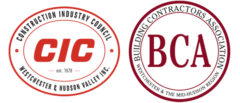WHAT’S NEW & WHO’S NEWS
Halahan to Retire from Orange County Partnership
By JOHN JORDAN
GOSHEN—Maureen Halahan, a true icon in the economic development field in the Hudson Valley, is retiring in June as the highly affable and effective leader of the Orange County Partnership. She helped to transform the county’s economy for nearly a quarter century into a diverse, vibrant center of commerce.
OCP announced on March 3 Ms. Halahan’s pending retirement as President and Chief Executive Officer and also reported that its Board of Directors had voted to appoint Conor Eckert, the current senior vice president, as the incoming president and CEO.


Business and political leaders praised Ms. Halahan’s work since 2002 and hailed Mr. Eckert’s appointment. Ms. Halahan joined the Orange County Partnership in 2001 as Director of Business Attraction and took over from the retiring Ann Barber as the leader of the organization the following year. She is the longest serving economic development specialist in the Hudson Valley.
Orange County Executive Steve Neuhaus said, “I have worked closely with both Maureen and Conor throughout my administration. Maureen’s leadership has had a profound impact on Orange County, and I have no doubt that Conor will continue that tradition of excellence.”
Ms. Halahan’s leadership has been a driving force over the past two decades in the significant economic growth that has occurred in Orange and the entire Hudson Valley. During her tenure, she was instrumental in securing and supporting major development projects, including Legoland New York, Amazon, Tesla, Pratt & Whitney, Medline Industries, and President Container Group, among others. These projects have led to the creation of thousands of jobs, the development of critical infrastructure, and billions of dollars in private investment.
In addition to her work at OCP, she has served on the Mid-Hudson Regional Economic Development Council for more than 13 years, providing guidance and support for business growth and regional collaboration.
Mr. Eckert has been with OCP for three years, most recently serving as senior vice president. During his tenure, he has focused on positioning Orange as a hub for advanced manufacturing and developing shovel-ready sites to attract high-quality projects. His work has led to significant investments in the region, including projects with Poly Craft Industries, Kedem/Royal Wine and Cardinal Healthcare.
His leadership was also pivotal in securing key funding for the development of shovel-ready tech sites through the FAST New York initiative. He came to the Partnership after serving almost two years as the Executive Director of the Town of Montgomery Industrial Development Agency and Director of Economic Development for the Town of Montgomery. He was responsible for the business attraction, retention and expansion efforts in the Town of Montgomery, managing a growing project portfolio of more than $200 million. He also managed the public and community affairs and operations of the IDA.
OCP is a private not-for-profit office of economic development that serves as the external marketing agency for business development in the county. In the past five years, her team has assisted with the attraction and/or expansion of 99 companies. These transactions have generated $902,446,000 in capital investment and created 3,146 new jobs.
Hudson Valley, NYC Planners Form Partnership
POUGHKEEPSIE, NY—Hudson Valley Pattern for Progress and the New York City Department of City Planning (DCP) announced on Feb. 28 a new partnership to explore regional connections between New York City and the Hudson Valley on economic development, tourism, agriculture and other key issues.
The partnership will include biannual meetings between Pattern for Progress and New York City officials, including discussions of how to build on the robust economic ties and transit connections between the regions and how to support jobs in life science, tech, food, and film production, among other industries.
The partnership was first announced on Tues., Feb. 25 at a Pattern event at Marist University with DCP Director Dan Garodnick, exploring opportunities for collaboration between the Hudson Valley and New York City.
“I am grateful that New York City has agreed to collaborate with the Hudson Valley to discuss a wide range of opportunities and actions that will benefit our regions,” Pattern CEO Adam Bosch said. “Pattern will coordinate routine discussions for civic and business leaders to connect with their peers in New York City. These collaborations will aim for specific actions on business attraction and growth, tourism, food systems, housing, transit, and other topics that stitch together the Hudson Valley and New York City. I want to thank Dan Garodnick and his team at DCP for bringing the city’s government agencies and nonprofits into this active collaboration between our regions.”

“New York City and the Hudson Valley are deeply intertwined, from our housing market to transportation infrastructure to supply chain and more. When New York succeeds, the region succeeds, and vice versa,” said Mr. Garodnick who also serves as chair of the New York City Planning Commission. “That’s why this ongoing partnership is such an exciting opportunity to coordinate our planning efforts and further grow the largest regional economy in the western hemisphere.”
The partnership formally began with a discussion between DCP, Pattern, and the planning commissioners from several Hudson Valley counties following the Pattern event. The discussion identified several topics on which the Hudson Valley and New York City will collaborate, including economic development, tourism, agriculture, and other key issues. Planners also explored potential action items that might be pursued. For future discussions, Pattern and DCP will bring together economic development experts, tourism bureaus, farmers and food-system operators, and other stakeholders who would benefit from planning across both regions.
Pattern’s Bosch related that the two regions are going to explore partnerships related to the 2026 FIFA World Cup, which is expected to bring hundreds of thousands of international visitors to the greater New York area. This will require a regional approach to lodging, transit, events management, etc., he noted.
New York City and the Hudson Valley have strong economic connections. The two regions include more than 267,000 commuters, and account for more than half the jobs and nearly 40% of the housing permits in the greater metro area. Several planning efforts have recently pointed toward the need to develop inter-regional strategies that strengthen and develop these connections, Pattern for Progress officials stated.
For example, the city’s “New New York” action plan challenges its leaders to “develop regional strategies that foster mutually beneficial connections between New York City and the surrounding region.” The latest comprehensive economic development strategy for the Mid-Hudson Region, published by Empire State Development in 2024, also articulates this goal. The ESD report stated: “Frequent communication between regional leaders and elected and appointed officials from New York City should be encouraged to explore the development and expansion of markets for goods that are made in the Mid-Hudson region.”
Pattern will provide regular updates to Hudson Valley civic leaders about the regional discussions with New York City, including action items that are identified throughout the year.
CEO Outlook Mixed: Survey
LOUDONVILLE, NY—A recently released survey of more than 500 CEOs across upstate New York reveals a cautious but improving outlook for the state’s economic future. Business leaders express increased confidence in economic conditions over the next three to five years, with technology, manufacturing, tourism, education, and medical sectors expected to drive growth. However, concerns about taxation, regulatory burdens, workforce availability, and inflationary pressures continue to weigh on decision-making.
The survey, conducted by the Siena College Research Institute (SCRI) in partnership with UHY and the Hudson Valley Economic Development Corp., interviewed CEOs in industries such as service, manufacturing, nonprofit, engineering and construction, retail, food and beverage, wholesale/distribution, financial services, healthcare, technology, and tourism.
“While there is a slight increase in optimism among CEOs since last year, the overarching theme continues to be one of concern for the fragility of our economy and the uncertain business climate. The survey results confirm the sentiment that New York is increasingly unaffordable, and our elected leaders are doing little to address this or create a better business climate. We hope that the legislature and policy makers will be responsive to the employers and job creators in their districts and reverse the cycle of enacting policies that negatively impact our state’s workforce and economy,” said Heather Mulligan, president and CEO of The Business Council of New York State.
The following are some of the noteworthy trends from the survey:
- According to the Siena College Research Institute’s latest Business Leader Confidence Index, CEO confidence has rebounded significantly, reaching its highest level since 2018—rising to 78.8 from 60.8 in last year’s survey. This index is based on four questions, and an index score of 100 represents a breakeven point at which optimism and pessimism are balanced. The dramatic increase is based largely on the future index, which measures the CEO confidence outlook on state and industry conditions over the coming year and stands at 92.5.
- A total of 17% of CEOs believe New York State’s economy has improved over the past year, while 53% say conditions have worsened. This marks a slight improvement from last year when 59% saw worsening conditions. When assessing their own industry, 16% report better conditions, while 50% (down from 61%) say conditions have worsened.
- 31% of CEOs expect economic conditions to improve throughout 2025, a 13-point increase from last year. However, 35% anticipate further economic deterioration.
Published: March 13, 2025.
